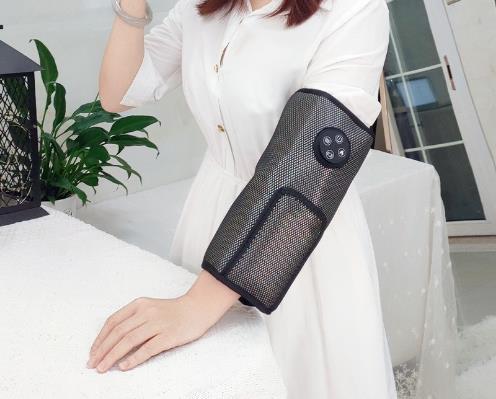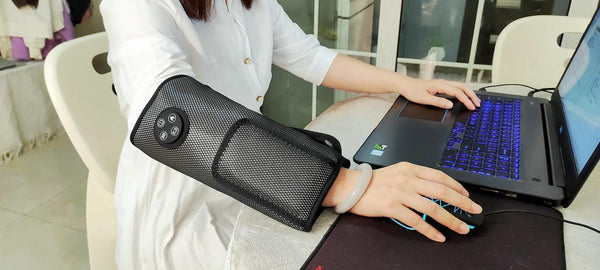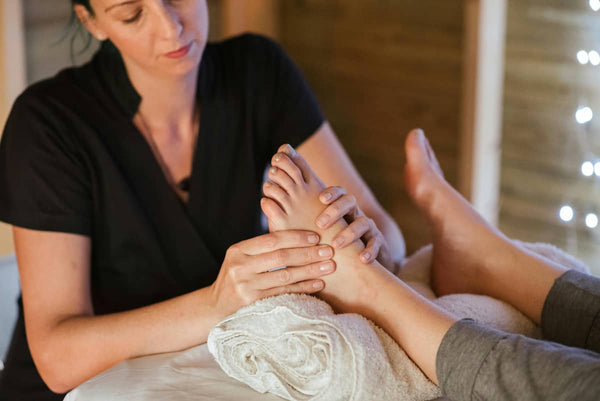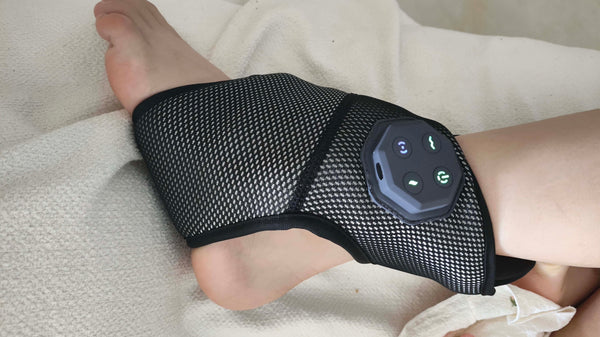 If you're an office worker, chances are you're no stranger to the persistent aches in your neck, the tightness across your shoulders, or the dull throb in your lower back. Prolonged sitting and repetitive tasks can take a significant toll on the body. Addressing this discomfort is not just about feeling better; it's about maintaining your overall well-being and productivity. The question many ask is: what's the best approach? Should you invest in regular professional massages, or can massage tools provide adequate relief at home or even in the office?
If you're an office worker, chances are you're no stranger to the persistent aches in your neck, the tightness across your shoulders, or the dull throb in your lower back. Prolonged sitting and repetitive tasks can take a significant toll on the body. Addressing this discomfort is not just about feeling better; it's about maintaining your overall well-being and productivity. The question many ask is: what's the best approach? Should you invest in regular professional massages, or can massage tools provide adequate relief at home or even in the office?
This article offers a professional perspective on this common dilemma. We will explore the benefits and drawbacks of both professional massage and various massage tools, particularly for those in sedentary roles. My aim is to provide concise, practical guidance to help you make an informed decision that suits your specific needs and lifestyle, drawing from years of experience in observing how different approaches impact physical well-being. This is a really, really important consideration for long-term health in the modern workplace.
Understanding Office-Related Muscle Strain
The daily grind of office work often involves extended periods of sitting, frequently in suboptimal postures, and repetitive motions like typing and mousing. This can lead to a cascade of physical issues. Common complaints include chronic muscle tension, the development of painful trigger points, reduced blood circulation to affected areas, and nerve impingement. From a traditional viewpoint, such sustained immobility and postural stress can lead to stagnation in the body's energy pathways, or meridians, contributing to pain and stiffness. The neck, shoulders, lower back, wrists, and even hips are particularly vulnerable.
It's not just about muscles; this strain can impact connective tissues and overall joint mobility. Ignoring these early warning signs can lead to more persistent problems. Therefore, finding effective ways to alleviate this strain is crucial. Both professional intervention and the judicious use of self massage tools can play a role in managing and preventing these common office-related ailments. Understanding the root of your discomfort can guide you towards the most effective type of massage tool or professional care.
- Common pain points: Neck stiffness, shoulder tension (trapezius), lower back pain, wrist/forearm discomfort.
- Contributing factors: Prolonged sitting, poor ergonomics, repetitive strain, stress.
- Potential consequences: Reduced mobility, chronic pain, decreased productivity, impact on mood.
Professional Massage: The Expert's Touch for Deep Relief
Professional massage, administered by a trained therapist, offers a level of diagnostic skill and personalized treatment that is difficult to replicate through other means. A therapist can assess your specific posture, identify intricate patterns of muscle imbalance, and apply targeted techniques to release deep-seated tension. For office workers, this can mean addressing not just the sore shoulder but also contributing factors in the neck or upper back. In my clinical experience, the ability of a skilled practitioner to palpate tissues and understand anatomical relationships is invaluable for complex cases.
The benefits extend beyond immediate pain relief. Professional massage can improve circulation, enhance lymphatic drainage, reduce stress hormones, and increase body awareness, which can help you recognize and correct poor postural habits. While the cost per session is higher than purchasing a massage tool, the comprehensive care and potential for lasting relief from specific, stubborn issues can make it a worthwhile investment. Perspective 1 rightly highlights these comprehensive benefits and the value of a therapist's professional skills for full-body care.
- In-depth assessment of muscle imbalances and trigger points.
- Customized treatment plans adapting to individual needs and responses.
- Techniques that can address deeper layers of tissue often inaccessible to self massage tools.
- Potential for addressing underlying causes, not just symptoms of muscle pain.
Massage tools: Convenient Support for Daily Well-being
 Massage tools offer a compelling alternative or complement to professional care, especially in terms of cost-effectiveness and convenience for daily use (Perspective 2). For office workers, having a massage tool readily available can mean addressing stiffness before it escalates. These range from simple manual devices like foam rollers or massage balls to more sophisticated electronic massagers for the neck, shoulders, or back. The key is their accessibility for frequent, short bursts of relief throughout the day, perhaps even during a work break.
Massage tools offer a compelling alternative or complement to professional care, especially in terms of cost-effectiveness and convenience for daily use (Perspective 2). For office workers, having a massage tool readily available can mean addressing stiffness before it escalates. These range from simple manual devices like foam rollers or massage balls to more sophisticated electronic massagers for the neck, shoulders, or back. The key is their accessibility for frequent, short bursts of relief throughout the day, perhaps even during a work break.
The evolution of massage tools is quite exciting; some modern devices are being designed with principles from traditional therapies in mind, aiming to simulate techniques like acupressure or provide targeted relief to specific zones. However, it's crucial to understand that these tools lack the personalized diagnostic capabilities of a therapist. Learning how to use massage tools correctly is paramount to ensure safety and effectiveness. While they may not resolve complex issues, they are excellent for managing general tension and promoting relaxation on a regular basis.
- Immediate access to relief for common aches and stiffness.
- Lower overall cost for frequent, ongoing self-care.
- Empowerment to manage your own muscle health proactively.
- Variety of massage tools available to target different body parts and preferences.
Making an Informed Choice: A Cost-Benefit Analysis for Office Workers
The decision between professional massage and massage tools isn't always an either/or scenario; often, a combination is ideal. Consider the nature and severity of your discomfort. If you're dealing with acute, sharp, or persistent pain, a professional assessment is highly recommended. A therapist can help diagnose the issue and may even recommend specific types of self massage tools or exercises as part of your ongoing care plan. For general stiffness, post-workday tension, or as a preventative measure, massage tools can be highly effective and economical.
The cost-benefit analysis also hinges on your budget and time. Regular professional massages can be a significant financial commitment. Investing in a quality massage tool, or a few different ones, can provide substantial long-term value if used consistently and correctly. Think about what offers the best for muscle pain relief in your specific situation. Is it the deep, targeted work of a professional once a month, supplemented by daily use of a neck massager? Or is consistent self-care with various massage tools sufficient to keep your typical office-related aches at bay? A balanced approach often yields the best results.
- Severity of pain: Acute/chronic pain often benefits from professional diagnosis.
- Budget constraints: Massage tools are more cost-effective for frequent use.
- Time availability: Tools offer on-demand relief; professional sessions require scheduling.
- Type of relief needed: Deep therapeutic work vs. general maintenance and relaxation.
When to Seek Further Professional Guidance
While massage tools are beneficial for many common complaints, there are times when self-care isn't enough, or could even be inappropriate. If your pain is severe, persists despite self-treatment, worsens, or is accompanied by other symptoms like numbness, tingling, weakness, or radiating pain, it's crucial to consult a healthcare professional, such as a doctor or physiotherapist. These could be signs of a more serious underlying condition that requires medical diagnosis and treatment.
Furthermore, if you have pre-existing health conditions, such as osteoporosis, circulatory problems, or are pregnant, it's always wise to discuss the use of any massage tool or the pursuit of professional massage with your doctor first. Responsible self-care includes knowing your limits and recognizing when expert intervention is necessary. Don't try to "push through" significant pain with a massage tool; that can sometimes aggravate the issue.
- Pain that is severe, sharp, or doesn't improve with self-care.
- Pain accompanied by numbness, tingling, weakness, or radiating sensations.
- Pain resulting from a recent injury.
- If you have underlying health conditions that might contraindicate massage or tool use.
For office workers grappling with physical discomfort, both professional massage and massage tools offer valuable pathways to relief. Professional massage provides expert, personalized care capable of addressing complex issues and providing deep therapeutic benefits. Massage tools offer the advantages of convenience, cost-effectiveness, and daily accessibility, empowering you to manage your muscle health proactively. The optimal choice often lies in understanding your specific needs and potentially integrating both approaches.
Taking proactive steps to care for your body amidst the demands of office work is an investment in your long-term health and productivity. Whether you choose the skilled hands of a therapist, the consistent support of a massage tool, or a combination, prioritizing your physical well-being can make a significant difference in your daily life. Thoughtfully selected and properly used self massage tools can indeed be powerful allies in maintaining comfort and function.
Frequently Asked Questions
What massage tools are essential for beginners?
For beginners, especially office workers looking for simple, effective relief, I often recommend starting with a few basics. A good quality massage ball (like a lacrosse ball or a specifically designed spiky ball) is excellent for targeting knots in the shoulders, back, and hips. A simple heating massager or a small foam roller is very useful for massaging larger areas such as the back and thighs. You can modify a U-shaped manual neck massage tool into a heating massager, or use a small foam roller to adapt it for use with a U-shaped manual neck massage tool. Such as a softer foam roller or massage ball or a multifunctional massager that is adjustable and easy to operate. The key for beginners is to choose tools that are easy to control, start gently, and learn how to use massage tools properly by focusing on areas of tension without causing sharp pain. Simplicity is often best when starting out.
Are massage tools cost-effective for self-care?
Generally, yes, massage tools are very cost-effective for ongoing self-care. A single professional massage session can be a notable expense. In contrast, most massage tools represent a one-time purchase that can provide countless uses over an extended period. For instance, a quality handheld massage tool or a set of massage balls might cost less than one professional session but can be used daily for months or even years. This makes them a highly economical option for regular maintenance, managing mild to moderate muscle soreness, and proactive self-care, particularly for office workers who experience recurrent tension.
Are massage tools safe for daily use?
Many massage tools can be safe for daily use, provided they are used correctly and with awareness. Gentle tools, like softer foam rollers or massage balls used with moderate pressure, can be part of a daily routine to ease stiffness. However, more intense tools, such as percussive massagers or very firm acupressure devices, should be used with more caution if applied daily to the same area; it’s important to allow tissues to recover. Always listen to your body – if something causes sharp pain or feels wrong, stop. It's also crucial to avoid using massage tools directly over bones, joints, acute injuries, or inflamed areas. If you have any underlying health conditions, it's always best to consult with a healthcare professional before incorporating new self massage tools into your daily regimen.
This reply is generated based on currently verifiable public information and general knowledge. It is recommended to cross-check key content with authoritative sources and consult with a healthcare professional for personal medical advice or before making significant changes to your health regimen, especially if you have pre-existing conditions.




0 comments